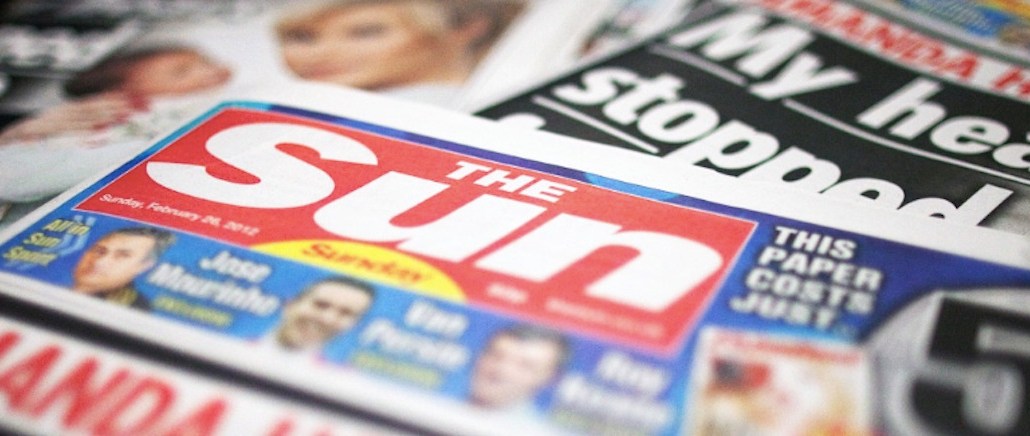
Today, thousands of people will be tuning in to The Sun’s Facebook page to watch someone watch something. Former England footballer Emile Heskey will sit in a pub and watch Slovakia play England in the UEFA cup. The tabloid’s Facebook live stream is, in some ways, the poor cousin to hit TV show “Gogglebox.”
This is just one thread of the Facebook Live output coming from parent company News UK, which is ramping up its Facebook Live video production from a couple a week to up to five a day, across all its titles: The Sun, The Times, even The Times Literary Supplement.
“What amazes me is how quickly it’s evolving,” said Derek Brown, head of video at News UK. “In just a few weeks we’ve moved from filming something a bit haphazard on a phone to something much more professional. Over 50 percent of the live videos we do are in our studio. People are expecting much higher quality.”
For the last six weeks, Facebook Live has been the playground for The Sun, the tabloid title with a heritage of celebrity gossip, football and Page 3, making it a more immediate fit for the format than perhaps the other titles in the News UK stable. The format has grown in importance to become a regular at The Sun’s morning’s editorial meetings where reporters will thrash out the stories that will make it in a live format. A few greatest hits so far have included cats predicting the outcome of the England and Wales football game, reporter Dan Wootton discussing Taylor Swift’s tryst with Tom Hiddleston, filling up a football sticker book, interviews with U.K. reality TV stars, and two guys seeing how long they can last in an ice bath.
“What works are videos that are stunty, really visual and with an element of danger, and a punchline,” said Brown, “hairy men waxed live.”
So far this stunt stuff is working for The Sun. On average, live videos posted across The Sun’s 20 different Facebook pages are longer than other Facebook videos at between 15 and 20 minutes and are getting up to 35,000 views. This is in line with the views for similar content from sites like Mic and Vox.
What works less well is two people sitting in a chair talking, according to Brown. Seventy-nine percent of The Sun’s Facebook video is watched with the sound off, and Brown said that is always a consideration when The Sun plans a live video. “That’s part of the challenge with live, it’s difficult to create really visual stuff in a live environment.”
That’s not to say this wouldn’t work for The Times, which has lightly dabbled in Facebook live video with coverage on the EU referendum. “The Times has a very successful paying subscription model. Tactically, on Facebook Live, we want to use it to remind people that it will inform you,” adds Brown.
It’s too early to talk about monetizing live for News UK, but brand sponsored videos will be coming soon.
Of course, the strategic planning by news organizations about the purpose of their content is made more difficult by Facebook limiting the data they can access and the ads they can run, said Matthew Littunen, media analyst at Enders. “We’re still in the period where Facebook gives live video free reach, but it’s an open question for everyone what that relationship with Facebook will look like down the line.”
“It’s like the Gold Rush,” notes Brown. “Facebook can introduce a feature, and then everyone is pivoting to make it work for them. It’s just a fact of life that Facebook is important for everybody.”
More in Media

YouTube is under fire again, this time over child protection
Adalytics Research asks, ‘Are YouTube advertisers inadvertently harvesting data from millions of children?’

Media Briefing: Publishers pump up per-subscriber revenue amid ad revenue declines
Publishers’ Q2 earnings reveal digital advertising is still in a tight spot, but digital subscriptions are picking up steam.

Lessons for AI from the ad-tech era: ‘We’re living in a memory-less world’
Experts reflect how the failures of social media and online advertising can help the industry improve the next era of innovation.
Ad position: web_bfu